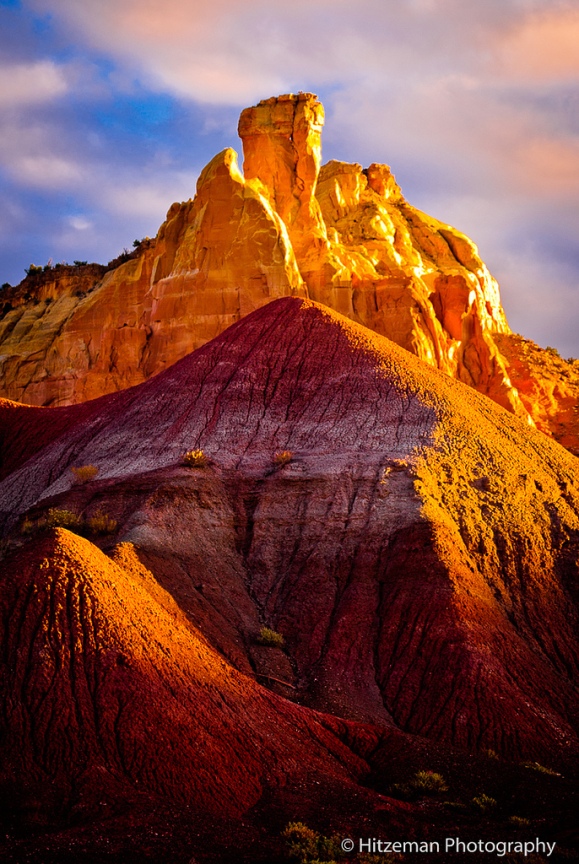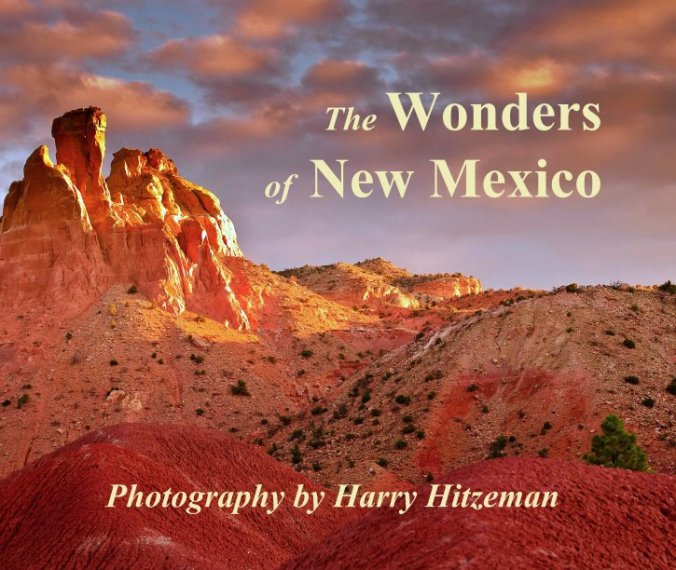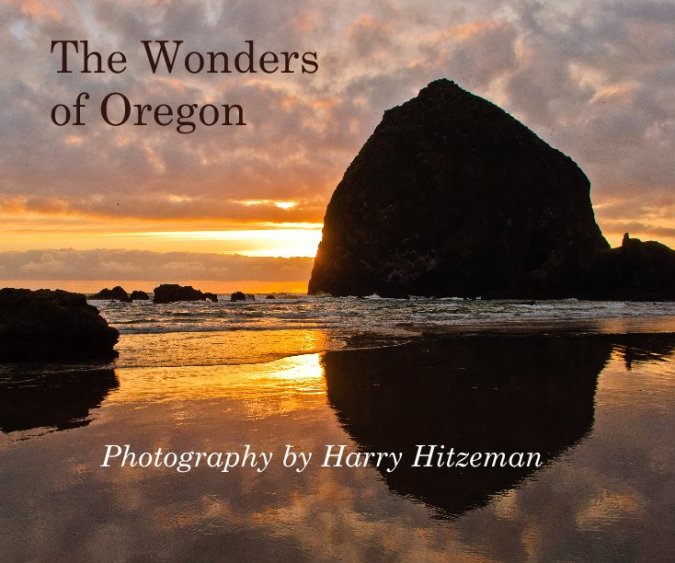Tomorrow I’m heading over to Ghost Ranch in Abiquiu, New Mexico, to teach a week of Digital SLR Photography in Georgia O’Keeffe country. I look forward to spending time in that most beautiful landscape, sharing this passion with a new group of participants.
Category: New Mexico (Page 1 of 2)
I’ve heard and read so much about HDR photography that I wanted to do a quick comparison of the leading software packages – Adobe Photoshop CS4 HDR component, Photomatix Pro 4, and Nik Software HDR Efex Pro.
The image below is my favorite from the three software packages, expressing a light-filled and colorfully fun place, inviting the viewer to come and sit and have a cooling drink with friends. Read on to see which software package was used to create this image and where it was taken.
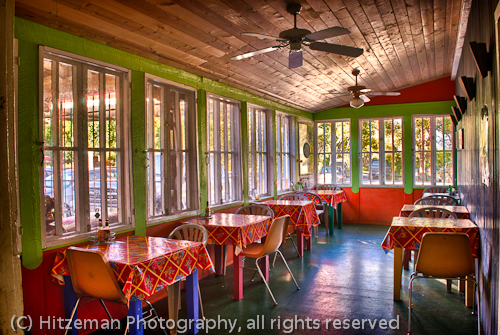
“Bode’s General Store”
For those unfamiliar with High Dynamic Range (HDR) imaging, it is a set of techniques that allow an image to portray a greater range of luminance between its lightest and darkest areas than current standard digital imaging techniques. HDR images can more accurately represent the range of light and shadow levels that the human eye can perceive in real scenes, ranging from direct sunlight to faint starlight. For reference, a digital camera can record a range of about 5 exposure stops in one scene, while the human eye perceives about 11 exposure stops.
The scene I chose for this comparison was this colorful scene inside Bode’s General Store in Abiquiu, New Mexico. It contains a range of luminance too great for the camera to record. It includes light coming in through two walls of windows, and the dark interior shadows beneath the tables.
- If I set my camera to expose for the window light, the interior shadows are black with no detail.
- If I set my camera to expose for the interior shadows, the windows are white with no detail.
- Since I wanted to create a single image with detail in both light and dark areas of the scene, I knew I had to take multiple exposures over a range and combine the images using HDR software.
Below are the three exposures I took of this scene using ISO 100, aperture f/16, at shutter speeds of 1/3 second, 1.3 seconds, and 5 seconds.



A Comparison of the Results
Adobe Photoshop CS4 HDR
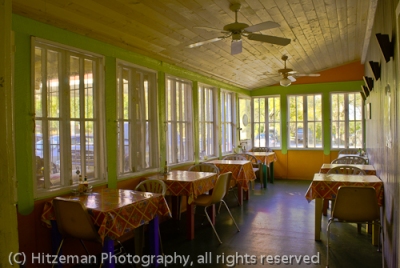
I found this software to be the most difficult to work with. Instructions on controls were unclear. The image coming out was muddy, and required additional processing in Lightroom to bring back color and contrast. I was still not happy with the results.
Photomatix Pro
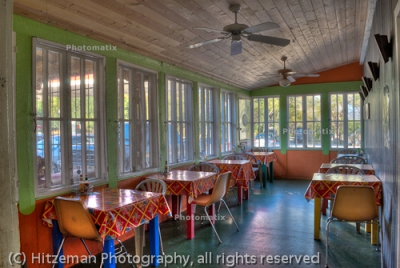
To be fair, I only ran this software once, and I need to study it more. However, I was surprised at how easily it produced a nicely balanced image on the first try. I did not need make many adjustments. This is probably the most “realistic” looking interpretation.
Nik HDR Efex Pro
(See image at top of this post.) I liked this software the best for now, mostly because of the understandable interface and the great results. It also has the greatest control with the ability to edit localized areas of the image using Nik’s control point technology. I took it a little beyond “realistic” for a more artistic effect.
Conclusion
For now, I recommend Nik HDR Efex Pro, with Photomatix Pro a close second. It may be worth more study to get good with Photomatix Pro. I would forget about Adobe Photoshop CS4’s HDR. (I have not tried Adobe Photoshop CS5’s HDR, but have read that it’s not that much better than CS4.)
Next time you are in Abiquiu, New Mexico, be sure to visit the 110 year old landmark, Bode’s General Store, and enjoy this colorful place for yourself!

Pack’s Gold
Do you edit your images?
I am often asked if I edit or enhance my images.
Absolutely!
Ansel Adams edited his film images in his film development and printing. I edit in my digital images on a computer with software.
Here’s my image titled “Pack’s Gold” from my New Mexico portfolio. This image was honored with an award at the Mayslake Nature Study and Photography Club on December 6, 2010.
It’s my artistic expression of that scene, that night. It has a “wow” factor. Its contrast, color, and composition strikes a bit of awe and wonder in me and probably the judges too. Someone commented to me later, “I bet it didn’t look that way.” Right! As an artist, I created this image to reflect the feeling and the impact of that magical evening — setting sunlight on the land against a dark stormy sky.
Do You Have Blue in Your Carpet?
Here’s another version of that scene:
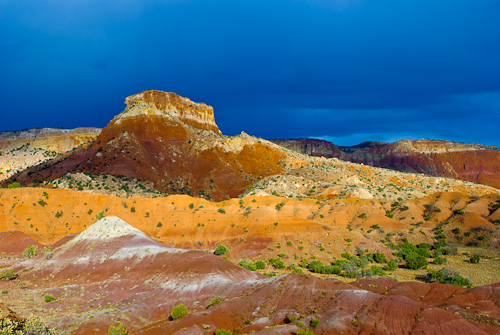
Pack’s Gold for Blue Lovers
Not bad. This one you might like if you prefer blue, or if the blue in the photo matches your carpet.
Both images were developed in Adobe Photoshop Lightroom. Did it really look like either of these that evening? Who can say? I am the artist, and the first image is what I saw that night. My will to create and my artist tools (the camera and software) allow me to render an image of awe and wonder that attempts to show how that scene in that evening moved my soul.
Is your camera an artist?
Below is the image as the camera processor recorded it, “camera neutral”. A machine’s view of things, not an artist’s view.

Pack’s Gold Raw File

Three Kings
This was an exciting trip to several iconic locations in north-central New Mexico. I was blessed with beautiful weather and days of spectacular clouds and light while photographing Battleship Rock, Cerro Pedernal, Chama River, Chimney Rock, Plaza Blanca, Orphan Mesa, Mesa Montosa, and the brilliantly colorful Painted Desert made famous by the paintings of Georgia O’Keeffe.
In this season of innocence and gratitude, I am grateful to have been able to photograph these timeless natural sculptures, and glad to be able to share these images with you.
My best wishes to you and yours!
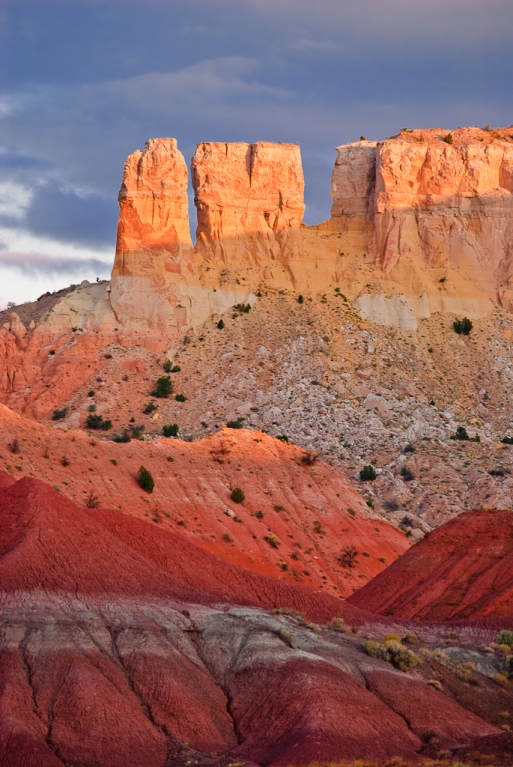
“Gateway to Heaven”
This image is of the rock formation known as Puerta Del Cielo, or Gateway to Heaven, with the red hills of Georgia O’Keeffe’s painted desert in the foreground.
So many beautiful locations in New Mexico!


